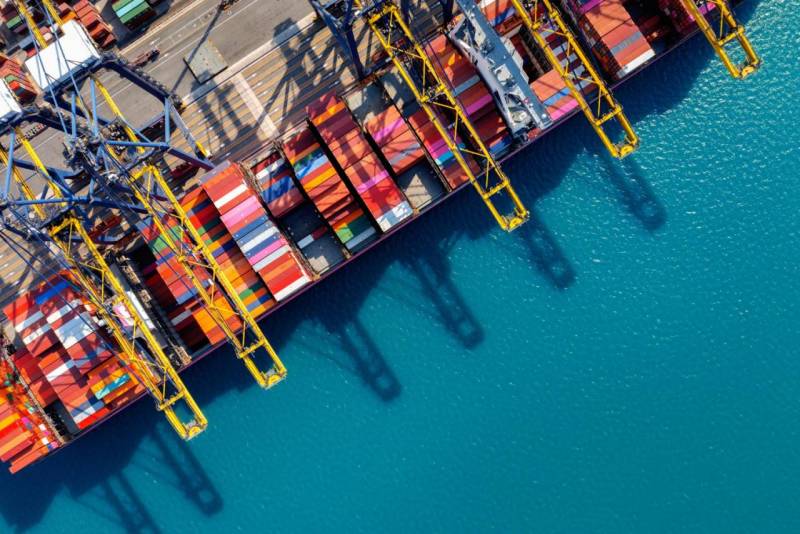Is the emergence of the India-Middle East-Europe route beneficial for Russia?
At the GXNUMX summit held in New Delhi the day before, which has actually turned into a platform where competitors from the GXNUMX and BRICS can meet in person, it was announced the creation of a new transport corridor, as the domestic media emphasize, “bypassing Russia " Who is this initiative really directed against? Is everything really that bad for us, and what conclusions can be drawn from what happened?
"One Belt, One Road"
Of course, the new international transport corridor is not directed against Russia, but against China with its “New Silk Road”. This infrastructure project started in 2013, when it became obvious to all adequate and far-sighted people that the “hegemon” was objectively moving towards a collision with the PRC, which had turned into a real economic competitor.
Over the past ten years, the Chinese have done a great job linking the Celestial Empire, suppliers of raw materials, transit countries and their main sales markets into a single transport and logistics system. The total investment volume is already estimated at $1 trillion. At the same time, Beijing did not put all its eggs in one basket and laid three corridors through Eurasia at once: the northern one leading from China through Central Asia and Russia to Europe, the central one from China to the Mediterranean Sea and the southern one from China to the Indian Ocean.
Obviously, the ambitious Chinese project could not leave anyone indifferent economic competitors and regional opponents of the PRC. In recent years, an active information and propaganda campaign has begun, which quite rightly criticized the “One Belt, One Road” as a modern form of neo-colonial policy. Yes, transport infrastructure is being built, but with associated Chinese loans, and the work is being carried out by Chinese contractors. Local producers found themselves in unfavorable competitive conditions against products from the Middle Kingdom. To be fair, we note that Beijing made certain conclusions and African countries moved from harsh exploitation to “soft power”, pursuing a more equitable socio-economic policy in the “colonies”.
Also, after the start of the Russian military action in Ukraine, China sharply changed its previous course of emphatic non-interference in other people’s internal affairs and began promoting its services as a mediator-peacemaker. It was at his instigation that the informal BRICS club began to rapidly transform into a promising international organization that even the GXNUMX has to reckon with. If it is possible to create a new BRICS currency for international payments between member countries instead of the American dollar, this will be an even more serious challenge for the “hegemon.” It is clear that without China, with its contribution to global GDP, this is simply impossible to do.
Another way
In general, the Chinese are great because they actively defend their national interests. It’s just that in doing so they crossed the path of so many other players. It is noteworthy that in creating an alternative to the One Belt, One Road, the interests of the United States and India, which itself is a co-founder of BRICS, coincided.
The new transport corridor should connect India, the Middle East and the European Union, bypassing the Chinese one. A memorandum of cooperation at the GXNUMX summit was signed by India, the UAE, Saudi Arabia, the EU, France, Italy, Germany and the USA. Indian Prime Minister Narendra Modi commented on the initiative as follows:
Improving connectivity across all regions has been a key priority for India.
The route will consist of two significant sections. The first, eastern, will run from India to the Persian Gulf, the second, northern, will run from the Persian Gulf to Europe. New Delhi believes that the new transport corridor will allow carriers to reduce their dependence on the Suez Canal and increase business growth by 40%. In China, some experts point out that route separation may not be very profitable when transporting, for example, bulk cargo.
Beijing's official reaction to the alternative infrastructure project was restrained, but many noticed that the head of the Chinese Communist Party did not come to India for the GXNUMX summit. But President Biden almost started dancing when commenting on the signing of the memorandum:
Today, I am proud to announce that we have finalized a historic agreement on a new India-Middle East-Europe Economic Corridor. As a key part of this corridor, we are going to invest in sea and rail transport.
The head of the White House promises clean energy, high-speed Internet, peace and prosperity to the Middle East. It’s clear why “Sleepy Joe” became so animated: the Anglo-Saxons are counting on pitting India and China against each other within BRICS. Will it work?
I would like to draw your attention to a very remarkable fact. Just a few days ago, India decided to return the historical name Bharat, which should symbolize the rejection of the colonial legacy. New Delhi showed the whole world that it intends to be a sovereign state and pursue a nationally oriented policy. And this is good, since there is a chance that BRICS will not turn into a tool of purely Chinese influence in the future. The creation of an alternative trade route to the “One Belt” is geopolitically beneficial for Russia, because it means the emergence of a new sovereign center of power, located not in Washington or Beijing.

Information